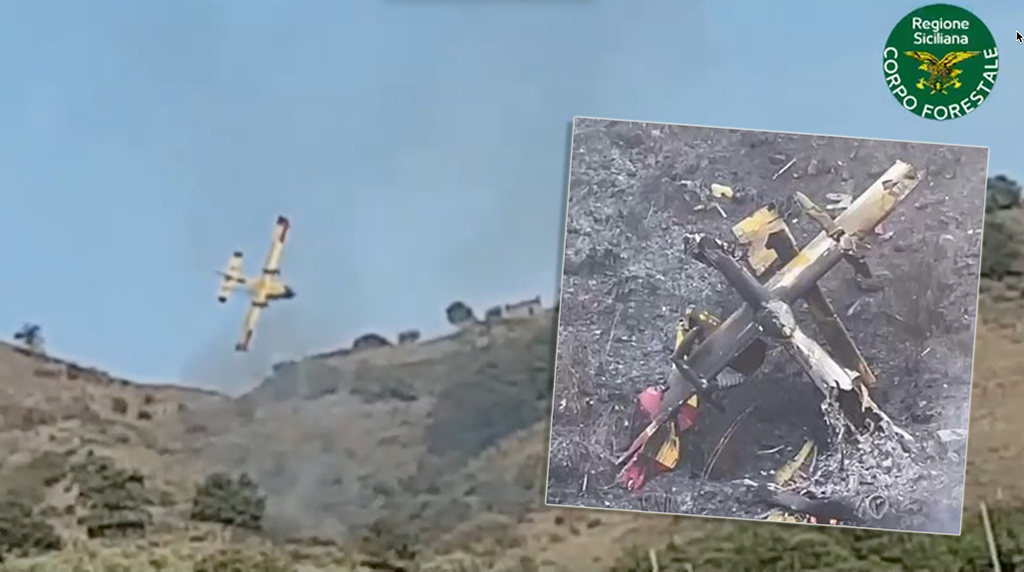The “water bomber” aircraft was fighting a fire in the mountains near Catania.
A Canadair CL-415 aircraft with registration I-DPCN and radio callsign “Canadair 28”, crashed early in the afternoon on Oct. 27, 2022, during the activities carried out to extinguish a forest fire on Mount Calcinera, in the municipality of Linguaglossa, province of Catania, Sicily, Italy. The two pilots on board the aircraft are still officially missing in the crash. The aircraft was part of a fleet of 19 CL-415s owned by the Dipartimento dei Vigili del Fuoco, del Soccorso Pubblico e della Difesa Civile (Department of firefighters, public rescue and civil defense) but operated by Babcock, the company that provides the Canadair service in Italy as part of an outsourcing contract.
🔴 #Catania, precipitato nel primo pomeriggio un #Canadair dei #vigilidelfuoco durante le attività di spegnimento dell’#incendio boschivo sul Monte Calcinera. Il velivolo sarebbe caduto per l’urto della carena contro la costa della montagna, squadre al lavoro [#27ottobre 18:00]
— Vigili del Fuoco (@vigilidelfuoco) October 27, 2022
At least two videos of the incident have been released so far, apparently taken by two different teams involved in the firefighting activities. Both the clips, show the aircraft fly above the ridge, then turn to the right and dive to release the retardant on the fire located on a slope (as we have seen CL-415 do so many times). But shortly after delivering the fire-retardant liquid, while still in a right hand turn, the Canadair’s right wing impacts the top of another hill, causing the rest of the airframe to collapse, hit the ground and explode.
Some pilots and other people with connections with the Canadair community, have almost immediately already started mourning the loss of their colleagues/friends (whose names have circulated online), even though, as mentioned, the official status of the two pilots (Babcock employees) is still “missing”. Anyway, you can find one of the videos of the incident, here. The other one, is here.
As a side note, Canadair 28 was the second Italian CL-415 to be given the civilian registration I-DPCN. The first one crashed near Brescia on Aug. 16, 2003. At the time, that airframe I-DPCN was coded 9 (“Canadair 9”). The aircraft was damaged beyond repair, while the two pilots survived the incident with wounds (one of them was heavily wounded).
As this author wrote in a previous article, the firefighting mission is undoubtedly one of the most hazardous for pilots. The very low altitude, the smoke that reduces visibility, winds causing turbulence, the large concentration of aircraft in the same area, the generally abrupt topography and the need of perform several fill-drop cycles in a short time make the water bomber role particularly risky.
The “Supescoopers”, as the CL-415 are also called, have been supporting firefighting operations across the world for decades and are largely appreciated for their capability of quickly delivering great quantities of water or fire retardant in response to fires. Since the aircraft is amphibian, it can refill its tanks from a nearby water source (lake or sea) in just 12 seconds while running on the water.













